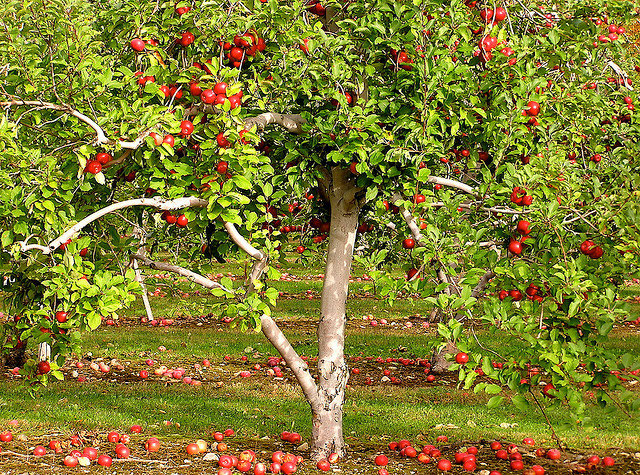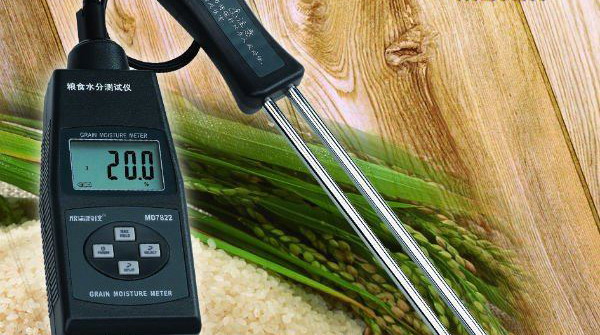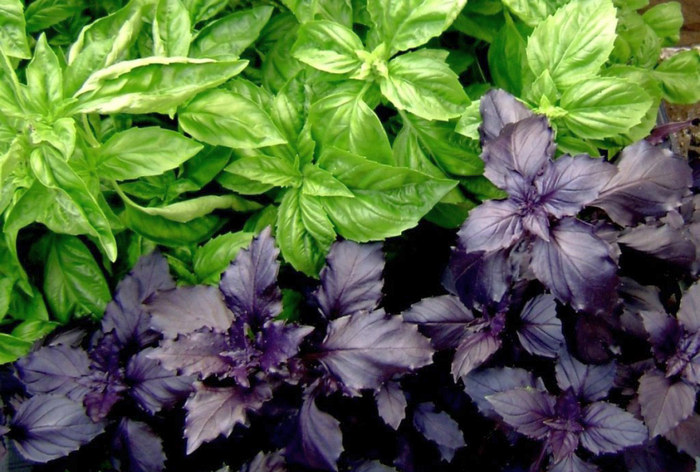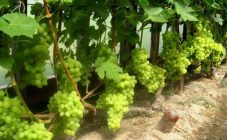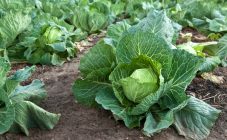Content:
The apple tree is a fruit tree that bears fruits that all family members love. It is not too whimsical, but novice gardeners have a number of questions: what can be planted side by side, what is the compatibility of the apple tree with other trees and bushes.
Conditions for growing apple trees
Growing fruit trees in the garden can be a very exciting and challenging hobby. There are a few things you need to know to increase your chances of success and make your planting more productive.
Each type of fruit tree has its own climatic limits. Many varieties of peaches, cherries, and plums will thrive in warmer areas. When they are grown outside their climatic range (minimum temperatures in winter fall below -25 ° C), and early spring frosts kill the flowers, then harvesting is out of the question.
Apple and pear trees can be successfully grown in a region where the minimum temperature drops to at least -30 ° C. Even though apples and pears bloom about 2 weeks later than in the south, unpredictable spring frost can kill the flowers. To determine if a variety will yield a crop in a selected area, you need to consult with the sellers from whom the gardener is going to buy seedlings, or local gardeners.
Currently, there are more than 30 species and about 10 thousand varieties of apple trees. But, unfortunately, only 12 species can grow in Russia, of which 9 are wild and only 3 are cultural. But this does not mean that southern apple varieties cannot be grown in the middle lane. It all depends on the diligence of the gardener and his love for his work.
Soil fertility plays a key role in the cultivation of apple trees. Before planting, you should check the soil of the area where the apple tree will grow, including a pH test.
How to check soil pH
First you need to dig a small hole in the soil. A spatula or shovel can help with this. The hole should be 5.1-10.2 cm deep. Break the hard soil inside the hole and remove the roots.
Next, fill the hole with water. To do this, you can use distilled water (in no case should you take it from a well). Such water can be found in any drug store or auto shop. Rainwater is slightly acidic, and bottled or tap water tends to be alkaline. The result should be a dirty "pool" in the hole.
Then insert the test probe into the mud. But before that, you should make sure that the tester is absolutely clean. It is best to wipe it down with a clean cloth and then stick it into the dirt. He must be there for 1 min. The pH is measured in the range of 1-14. It is recommended to take several measurements to make the result more accurate.
If the pH where the tree is to be planted is 6.0-7.0, then the soil in "good shape" is the most favorable indicator for the apple tree. You should try to avoid soils that are heavy or depleted.
Flowering time
Each species can only pollinate neighbors of the same species: apple trees will pollinate only other apple trees, pears only pears, etc. For pollination of the same type of apple, as a rule, there is no difference between, for example, Crab, Sidras, they can cross-pollinate each other.
For most fruit varieties, pollination is carried out by insects, most often bees. Since the process takes place in early spring, good weather, which will stimulate honey production, becomes an important factor.
Pollen production in apple trees is most intense at temperatures in the range of 15-20 ° C. In colder conditions, pollination will require more insects or planting winter-hardy varieties that produce pollen at low temperatures.
Blooming groups of pollinators
One of the easiest ways to determine if two varieties can pollinate each other is by examining the approved pollination dates or flowering groups. This information is available in horticultural complexes and agricultural organizations, where it is annually recorded based on the results of observations. The catalog contains dates for pollen production and varieties that grow at about the same time. The groups are assigned letters or numbers and are usually numbered in order from early to late flowering varieties of each species.
In cool, temperate climates where spring lasts long, the end-flow dates of some varieties overlap the start of others, so almost everyone can pollinate each other. However, in a warm continental climate, where the transition from winter to summer occurs very quickly, 2 groups are distinguished. The early ones will overlap in dates only with their "classmates", but the later ones will not pollinate.
The problem is that flowering dates differ from region to region, meaning that trees in more southern or sheltered areas tend to start blooming earlier than in northern climates.
What to plant next to the apple tree
Cultural compatibility is a mutually beneficial neighborhood. Often one plant can perfectly "make friends" with any shrub or tree, while another will mercilessly fight for a piece of land. To avoid this, you need to understand what can be planted next to the apple tree, and make sure that this neighborhood is beneficial for both plants.
Additionally, compatibility is affected by:
- light (partial shade or open area);
- food (fertilizers);
- soil (black, peaty soil or loam).
So, for example, the neighborhood of an apple and a pear is considered safe, because these fruits are considered to be closely related species in terms of flowering and resistance to diseases. But the proximity of apple and cherry can be disastrous for the latter.
You can successfully grow an apple tree if you plant it with:
- raspberries (with such a neighborhood, the apple tree is much more resistant to a variety of pests);
- plum (just like a pear, it is similar in appearance);
- cherry (in this case, it will be useful to plant 2 broadleaf trees);
- honeysuckle (you can combine it, but the main thing is not to overload the soil).
But the list of apple tree antagonists doesn't end there. Although it is very unpretentious in terms of soil and cultivation, it is extremely selective in its surroundings. That is why she has more rivals than roommates.
Every gardener thinks about what can be planted near the apple tree as soon as he acquires a seedling. In addition to the above, you can add neighbors such as quince, garlic, wormwood and maple to the apple tree.
It is undesirable to plant an apple tree and a cherry nearby, such a neighborhood will not be beneficial. Do not plant with jasmine, juniper, peach, poplar, rose, chestnut, elderberry, cherry plum and fir. After all, the incompatibility of a peach and an apple tree, for example, has been scientifically proven. The root system of the first can freely enter the zone of distribution of the second, causing them to die off or be forced out into the depths.
It should be borne in mind that if you still have to plant "bad neighbors" nearby, then you must not forget to maintain a distance between them, which, depending on the type, will vary from 4 to 10 m.
Gardening tips
In such a sensitive issue as gardening, advice from experienced professionals who have already experienced a lot of things and by trial and error have achieved the perfect result is useful. Such people have a lot to learn and you should never neglect their recommendations.
For centuries, European gardeners have expanded their gardens by growing fruits, vegetables, herbs and ornamental plants in combinations that benefit each other. Dwarf fruit trees are grown on plantations surrounded by companion plants that contain pests and help each other grow. These gardens are planned sequentially so that something is always ready to harvest or just in bloom.
“Good” neighboring plants help control pests, attract beneficial pollinating insects, and allow them to grow to their full potential. They can help retain moisture or interfere with weeds, be used as live mulch, which is then cut or dug up, and spread around the root zones of trees to add nutrients. Some have long roots that penetrate deep into the soil and provide valuable minerals and nutrients. They benefit all the plants around them.
Apples are prone to insect and disease infestations, including apple larvae, green fruit worms, and shellfish. Many gardeners who use pesticides believe that at least one annual prophylactic spraying is needed for a quality crop.
One idea to avoid pesticides is to choose disease resistant varieties like Prima and Svoboda. They are resistant to apple scab, apple rust and other common diseases, while others require occasional spraying with poisons every spring and summer. It is worth consulting with specialists to find complexes for the prevention of pests for your region and culture.
You can also try anti-insect oil (vegetable, linseed), which can be found at the grocery or beauty store. It is enough to water it near the roots in the spring, when the apple trees are in the awakening stage (after the leaves unfold from the fruitful cluster, but before the buds begin to release pink shoots).
Other pests such as scales, mites and aphids, although destroyed by birds, if not used a lot of sprayed poison, still need to be controlled by the grower. For example, an apple maggot can simply be caught by hanging one or two round softballs on branches in June through the end of summer, colored red, covered in a sticky consistency.
In conclusion, it is worth noting that good development, growth and fruiting can not always be obtained, this is influenced by many factors, but everyone who is not indifferent to a beautiful and fruitful garden should create comfortable conditions for the apple tree to the maximum.
